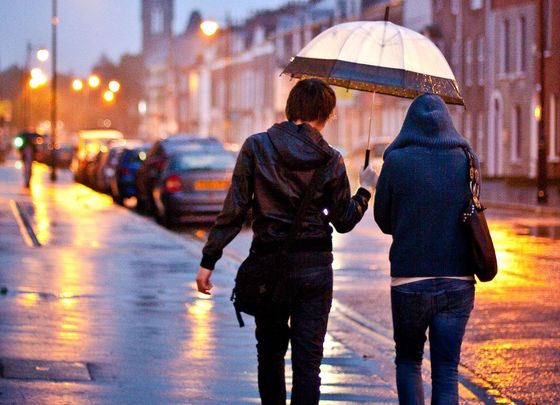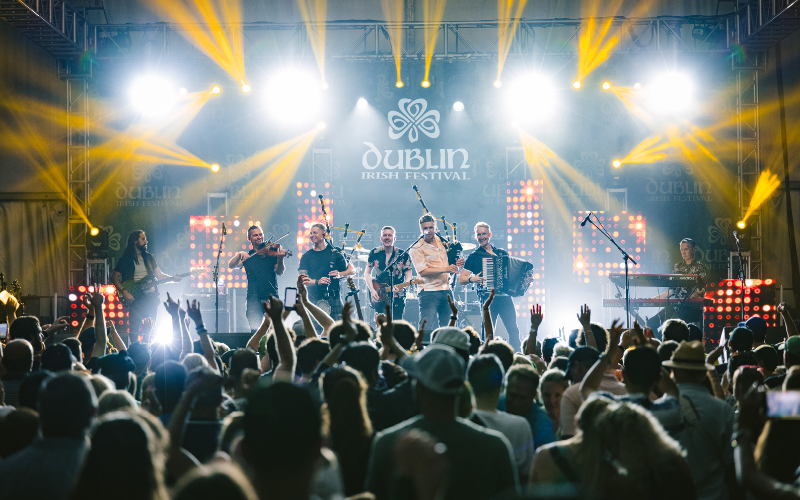Ireland went through an unusually cold snap in December – weathered the storm so to speak - it occurred to me, one of the notable traits of an Irish person is our unparalleled obsession with the weather. As amusing as it may sound, this is a not a new phenomenon and we have carried this trait for centuries. There is validity with our obsession, and this has been passed down through the generations, it has almost become part of our DNA!
If you are Irish you will understand, within the first five minutes of meeting someone, you can predict with certainty the weather will be discussed.
If there is one thing that all Irish people are comfortable taking about – it’s the weather! Generally, whether it’s good or bad weather, we tend to complain about it.
So where does it all come from…
Taking a closer look, the Irish have always maintained a healthy respect and regard for the weather, and this has been passed down through the generations with the reminiscence of folklore still evident. For example, it was widely accepted when there was a heavy mist it signified fairy activity in the area. Scientifically, there is also supporting evidence that our red hair and freckles are as a result of our limited sunshine and cloudy skies.
Our ancestors had an even closer relationship with the weather because, as a relatively small Island off the coast of Europe, the climate was so changeable and daily life was very much dependent on it. They looked to the sun, moon, stars, sky and clouds for signs. Agriculture, farming and fisheries were our main industries and predicting and anticipating weather was essential for economic survival.
Working the land and farming, weather was of the utmost importance as most work was done by hand and animals and crops needed to be protected from the elements. Animals also provided guidance as to what type of weather was expected. When cows lay down in the field it meant rain, a robin sitting high on the branch of a tree was a sign of good weather coming. Swallows flying high brought good weather, swallows flying low forecasted rain and so on and so on.
Looking back through Irish history there are several weather fronts that affected the Irish psyche, and many believe it is because of these events that we have such high regard for weather. Coincidently, all these great weather events happened in the month of January.
The events of “the night of the big wind” on the 6th January 1839 has been carried down through the generations and became part of Irish folklore. The Feast of the Epiphany falls on January 6th and many believed it was judgement day and the end of the world was nigh. There was no storm warning and gusts of winds reached 112mph. The weather front hit at 3pm and lasted 9 hours through the dark night causing several hundred deaths as well as damaging and wiping out about 25% of houses in Dublin. At sea further disaster struck with 42 ships wrecked. Waves were reported coming in from the Atlantic and over The Cliffs of Moher. About 5 miles inland fish were found on branches of trees having come in on waves from the ocean. It was the worst storm to hit Ireland for over 300 years and it was a devastating and frightening experience that lived long in the memories of people.
It’s worth noting that the weather was a factor when Ireland was at arguably at its lowest point in history. The Great Famine devastated our country and people between 1845 and 1852. Starvation and hunger related diseases caused the deaths of a million people with a further 1.5 million emigrating. At that time, one third of Ireland’s population depended on the potato crop for survival and when a disease affected the potato crop, the damp moist weather provided the ideal conditions for the fungus to grow and multiply and destroy the entire potato crop. Although the weather cannot solely be held responsible for Great Famine, it was a contributing factor.
The next big weather event that was cemented in the memory of Irish people was in the early part of the 20th century. In January 1917, a severe snowstorm hit Ireland and it was regarded as the most severe in over 200 years. Because of the low ground temperature, the snow lasted until St Patrick’s Day in March. This snow caused widespread destruction particularly in animals, wildlife and plants. Again, it proved to be a very challenging time for the agriculture and fisheries industries.
In 1947 The Big Snow hit Ireland and was reported as the coldest and harshest winter in living memory with snowdrifts measuring up to 15 feet high. It lasted for 2 months with very little respite claiming the lives of up to 600 people.
In 1963 The Great Freeze broke the records for the coldest winter on record.
In 1963, the bitterly cold winds, snow and freezing temperatures ensured it remained long in the memories of Irish people. The severe conditions impacted travel on land, sea and air. In Bray, south of Dublin, waves of up to 40 feet were reported and a woman was swept to her death in Dalkey Harbour, County Dublin. Food was airlifted to remote areas in County Wicklow which weren’t accessible by land. These blizzard conditions spread, causing widespread destruction across Europe. The Great Freeze retained this this record until 2010 when temperatures were about 2 degrees lower than the average during 1963.
In more recent living memory, The Big Freeze in 2010 was the most recent epic weather event. It was reminiscent of The Great Freeze in 1963 with bitterly cold northerly winds and heavy snow and caused all sorts of disruption and chaos to daily life.
In contrast to these wintery conditions, we don’t appear to have had the same extreme summer conditions to become engrained in our memories. Although, the Summer of 1976 will still be recounted by many who remember this unusually long hot Irish Summer.
Despite these extreme weather fronts, overall, the climate in Ireland can be summed up as being mild, moist and changeable with plenty of rainfall, a bit of wind and not many extreme temperatures. As a nation I believe we will always have a fascination for the weather. It is what makes us distinctly Irish, and the weather is something that connects Irish people on a human level. It is not merely a conversation ice-breaker - there is far more depth and substance to it and it’s something that will remain forever in our psyche!
For less chat about the weather and more information on Irish Family History, tracing Irish family roots and all things genealogical, please contact Linda Mulligan at www.longlostfamily.ie or email enquiries to [email protected].




Comments